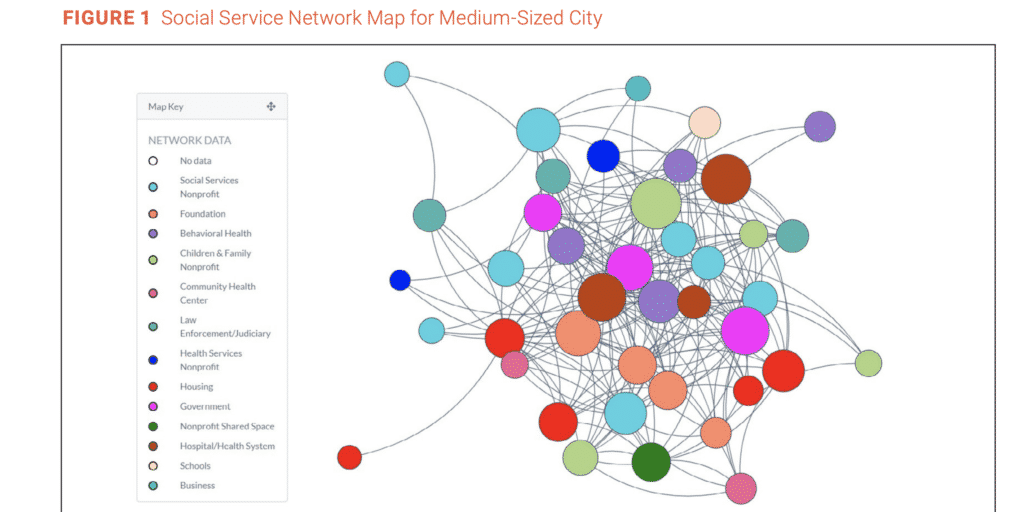
Using Social Network Analysis to Understand the Perceived Role and Influence of Foundations
In this research study (“Using Social Network Analysis to Understand the Perceived Role and Influence of Foundations”) we used social network analysis and the PARTNER Platform to better understand how foundations are perceived by their partners and grantees.
Collaboration between foundations and other organizations is critical to the success of foundation-supported initiatives, but the power dynamics among foundations, grantees, and their broader communities can be challenging. Social network analysis is a tool to assess collaboration among organizations and its outcomes. A unique yet often underemphasized benefit of this method of analysis is its focus on dyadic relationships between organizations, which presents an opportunity for foundations to evaluate their role in a network and how they are perceived by the very organizations whose missions they support.
This article leverages a social network analysis of community partners focused on addressing needs of people experiencing homelessness and housing shortages to illustrate how the results can constructively inform foundations on how they are viewed by community partners along dimensions of trust, value, resource contribution, activities, and contribution to outcomes. The analysis is conducted using an online network survey, analysis, and reporting tool called PARTNER. Using Social Network Analysis to Understand the Perceived Role and Influence of Foundations.
The analysis of survey responses captures over 600 unique dyadic partnerships across more than 40 community organizations, including their relationships with participating foundations. The PARTNER tool satisfies the need to evaluate both the impact of collaborative initiatives supported by foundations and foundations’ roles in these efforts.
Support for this publication was provided by the Robert Wood Johnson Foundation through the Systems for Action National Coordinating Center, ID 75150.
You can read the full paper below or click here to view it at the Foundation Review. Authors Include:
Todd L. Ely, University of Colorado DenverFollow
Katie Edwards, Nonprofit Centers Network
Rachel Hogg Graham, University of Kentucky
Danielle Varda, Visible Network Labs and University of Colorado Denver




